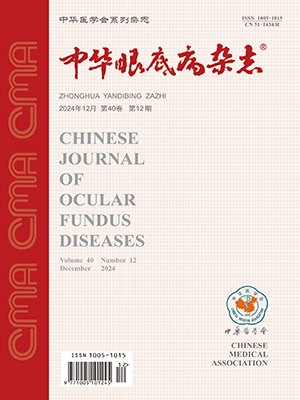| 1. |
Arepalli S, Kaliki S, Shields CL. Choroidal metastases: origin, features, and therapy[J]. Indian J Ophthalmol, 2015, 63(2): 122-127. DOI: 10.4103/0301-4738.154380.
|
| 2. |
Kaur G, Anthony SA. Multimodal imaging of suspicious choroidal neoplasms in a primary eye-care clinic[J]. Clin Exp Optom, 2017, 100(6): 549-562. DOI: 10.1111/cxo.12537.
|
| 3. |
Shah SP, Jain A, Coffee RE, et al. Optos Panoramic 200MA ultrawide-field imaging of peripheral RPE adenoma[J]. Semin Ophthalmol, 2009, 24(1): 37-39. DOI: 10.1080/08820530802520210.
|
| 4. |
Knickelbein JE, Hasan J, Nussenblatt RB, et al. Delineation of choroidal and retinal lesions in posterior uveitis by multispectral wide-field scanning laser ophthalmoscopy[J]. Retina, 2016, 36(11): 2213-2219. DOI: 10.1097/IAE.0000000000001050.
|
| 5. |
Onishi SM, Crabtree GS, Marks SJ, et al. disappearing choroidal melanoma on optos: the nose artifact[J/OL]. Retin Cases Brief Rep, 2018, 2018: E1[2018-07-17]. https://insights.ovid.com/crossref?an=01271216-900000000-98799. DOI: 10.1097/ICB.0000000000000755. [published online ahead of print].
|
| 6. |
Collet LC, Pulido JS, Gündüz K, et al. Fundus autofluorescence in choroidal metastatic lesions: a pilot study[J]. Retina, 2008, 28(9): 1251-1256. DOI: 10.1097/IAE.0b013e318188c7d0.
|
| 7. |
Almeida A, Kaliki S, Shields CL. Autofluorescence of intraocular tumours[J]. Curr Opin Ophthalmol, 2013, 24(3): 222-232. DOI: 10.1097/ICU.0b013e32835f8ba1.
|
| 8. |
Natesh S, Chin KJ, Finger PT. Choroidal metastases fundus autofluorescence imaging: correlation to clinical, OCT, and fluorescein angiographic findings[J]. Ophthalmic Surg Lasers Imaging, 2010, 41(4): 406-412. DOI: 10.3928/15428877-20100426-03.
|
| 9. |
Golshahi A, Bornfeld N, Weinitz S, et al. Near-infrared autofluorescence in bilateral diffuse uveal melanocytic proliferation associated with esophageal carcinoma and choroidal metastasis[J]. Retin Cases Brief Rep, 2016, 10(3): 254-258. DOI: 10.1097/ICB.0000000000000244.
|
| 10. |
Demirci H, Cullen A, Sundstrom JM. Enhanced depth imaging optical coherence tomography of choroidal metastasis[J]. Retina, 2014, 34(7): 1354-1359. DOI: 10.1097/IAE.0000000000000083.
|
| 11. |
Al-Dahmash SA, Shields CL, Kaliki S, et al. Enhanced depth imaging optical coherence tomography of choroidal metastasis in 14 eyes[J]. Retina, 2014, 34(8): 1588-1593. DOI: 10.1097/IAE.0000000000000131.
|
| 12. |
Cheung AY, Yonekawa Y, Balaraman S, et al. Multimodal imaging and histologic correlation of isolated metastasis of prostate adenocarcinoma to the choroid[J]. Retin Cases Brief Rep, 2017, 11(2): 166-170. DOI: 10.1097/ICB.0000000000000320.
|




